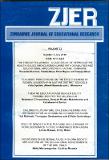| dc.contributor.author | Manyonganise, Molly . | |
| dc.contributor.author | Museka, Godfrey. | |
| dc.coverage.spatial | Zimbabwe | en_GB |
| dc.date.accessioned | 2014-12-02T18:46:32Z | |
| dc.date.available | 2014-12-02T18:46:32Z | |
| dc.date.issued | 2010-07 | |
| dc.identifier.citation | Manyonganise, Molly & Museka, Godfrey (2010)Incestuous Child Sexual Abuse In Shona Society: Implications On The Educational Achievements Of The Girl Child, ZJER vol. 22,no.2. Harare, Mt. Pleasant: HRRC | en_GB |
| dc.identifier.issn | 0008-9176 | |
| dc.identifier.uri | https://opendocs.ids.ac.uk/opendocs/handle/20.500.12413/5308 | |
| dc.description | A ZJER article on the implications of negative cultural practices on the education of the girl child in Zimbabwe. | en_GB |
| dc.description.abstract | Every society has rules that endorse and those that prohibit sexual relationships between and among its members. Incestuous sexual relationships are amongst the castigated relationships and taboos were put in place to prohibit such sexual practices. Incest taboos which exist in many societies were meant to concretise the sexual and marriage prohibitions. The Shona of Zimbabwe strongly condemn incestuous relationships which they call ‘makunakuna’ and attract severe punishment. However, incestuous child sexual abuse has become a prominent issue in modern day Zimbabwe. Its high prevalence is a concern for society especially in this era of HIV and AIDS. In this regard, the intention of this research is to find out the implications of incestuous child sexual abuse on the educational achievements of the girl child in Zimbabwean Shona society. The assumption of this research is that the main victim of incestuous child sexual abuse is the girl child. The inspiration of focusing on the girl child is derived from the gender inequalities that continue to define African societies in general and Zimbabwe in particular. Such inequalities have seen most of the victims of incestuous sexual abuse being girl children. Informed by various theories among them the culture- historical, feminist, sociological and psychological, this research makes a critical analysis of Zimbabwean Shona society’s attitudes towards women as a way of explaining the motivational factors which lead to the occurrence of incestuous child sexual abuse. Unstructured interviews, questionnaires, and general observations were used in gathering data relevant for this paper. Due to difficulties encountered in getting data from alleged perpetrators and victims of child sexual abuse, researchers had to gather data from eyewitnesses of such abuses. | en_GB |
| dc.language.iso | en | en_GB |
| dc.publisher | Human Resources Research Centre (HRRC); University of Zimbabwe | en_GB |
| dc.rights.uri | http://creativecommons.org/licenses/by-nc-nd/3.0/ | en_GB |
| dc.subject | Children and Youth | en_GB |
| dc.subject | Education | en_GB |
| dc.subject | Sexuality and Development | en_GB |
| dc.title | Incestuous Child Sexual Abuse In Shona Society: Implications On The Educational Achievements Of The Girl Child | en_GB |
| dc.type | Article | en_GB |
| dc.rights.holder | University of Zimbabwe | en_GB |


